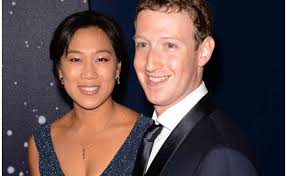Facebook Inc. Chief Executive Mark Zuckerberg and his wife
Priscilla Chan on Wednesday committed to invest more than $3 billion during the
next decade to build technology that can speed up research on disease.
“By investing in science today we hope to build a future in which
all of our children can live long and rewarding lives,” Chan said in a speech
at the University of California, San Francisco’s William J. Rutter Center.
The investment marks the latest major philanthropic effort
for the couple, who announced in December they would give away 99 percent of
their wealth over their lifetime. Celebrating the birth of their daughter, Max,
they formed the Chan Zuckerberg Initiative that month to advance human
potential and promote equality, but have primarily focused on efforts meant to
improve education.
For Chan, a pediatrician and former teacher, investing in science
and health is personal. As a doctor, she has worked with families in
the toughest moments of their lives, including those diagnosed with leukemia or
who have lost a child.
“In those moments and in many others, we are at the limit of what
we understand about the human body and disease,” Chan said.
The couple isn’t only trying to spur new scientific advancements,
but change the way scientists and engineers at different universities are working
together. After talking to scientists from Nobel laureates to graduate students
over two years, the couple believe it’s possible to cure disease in their
child’s lifetime.
Investing $600 million over the next decade in a new research
center called the “biohub,” UCSF, UC Berkeley and Stanford University
scientists and engineers are teaming up on efforts to combat infectious
diseases and create an “atlas” that maps out cells in the human body and their
molecular interactions.
The research center, located near UCSF Benioff Children’s
Hospital, will be led by biochemist and UCSF professor Dr. Joseph DeRisi and
Dr. Stephen Quake, a bioengineering and physics professor at Stanford.
“The better we understand these cell types in health and disease,
the better we’ll be able to develop new therapies to treat and cure disease in
areas ranging from cancer to diabetes,” Quake said.
Source: mercurynews

No comments:
Post a Comment